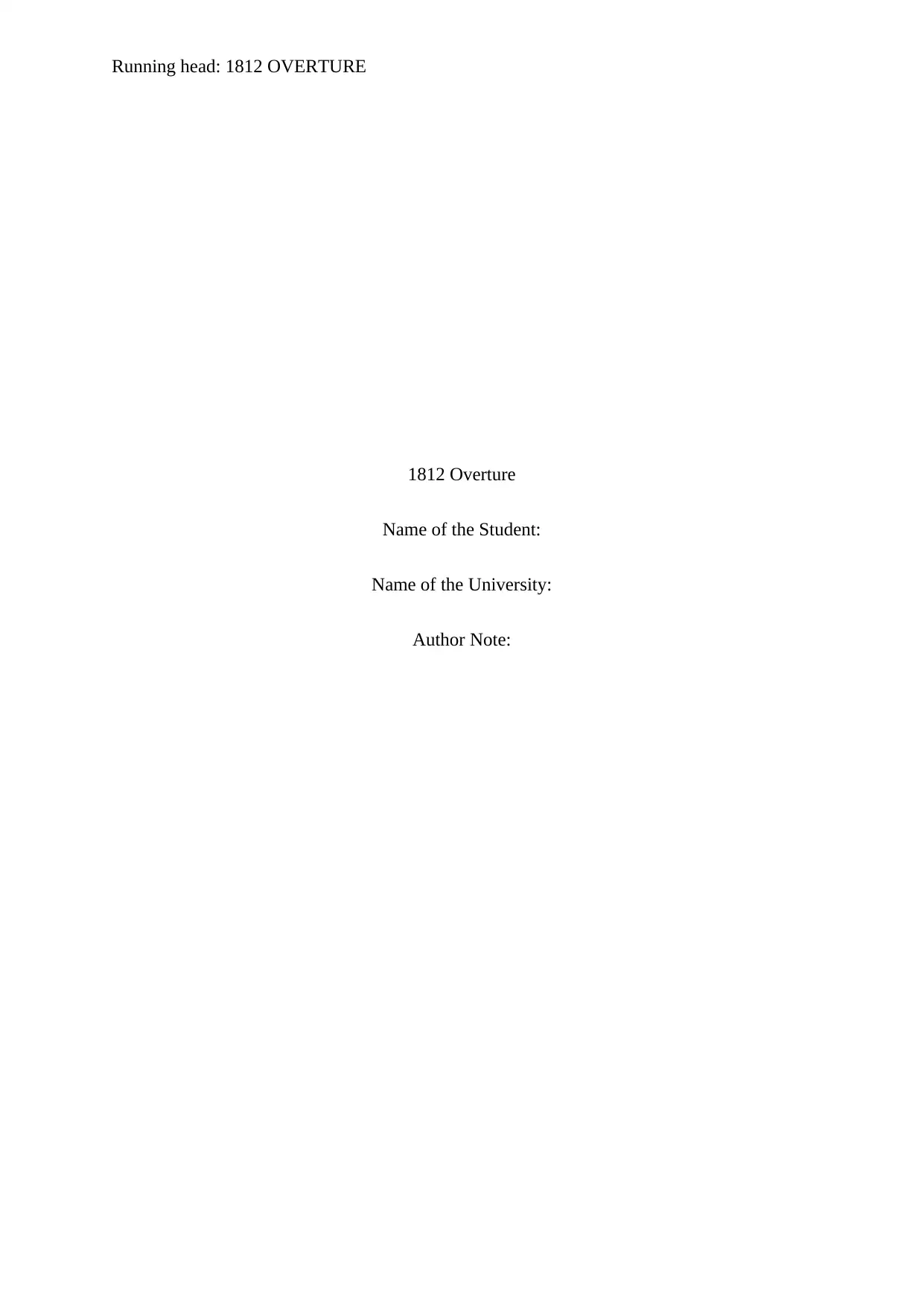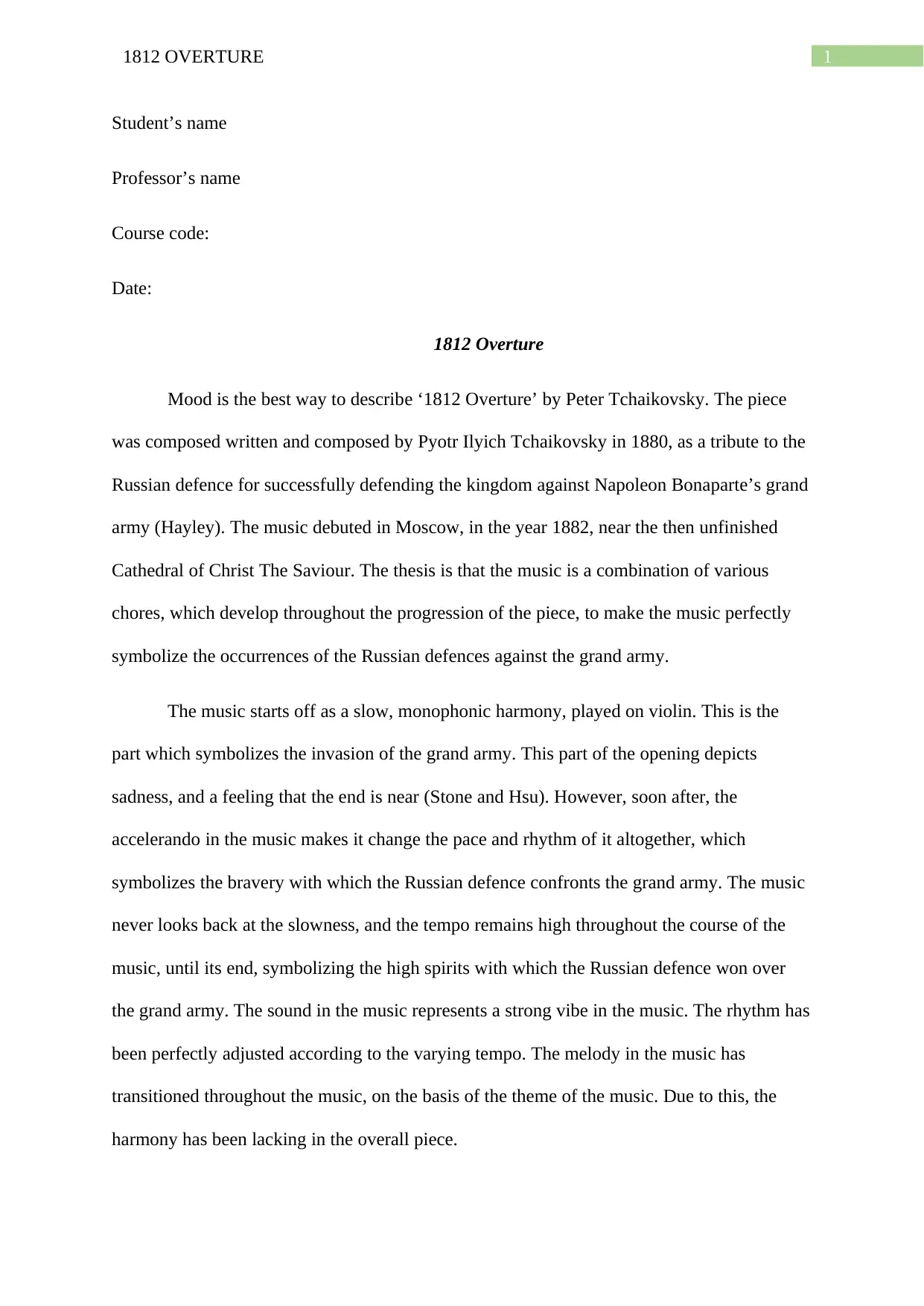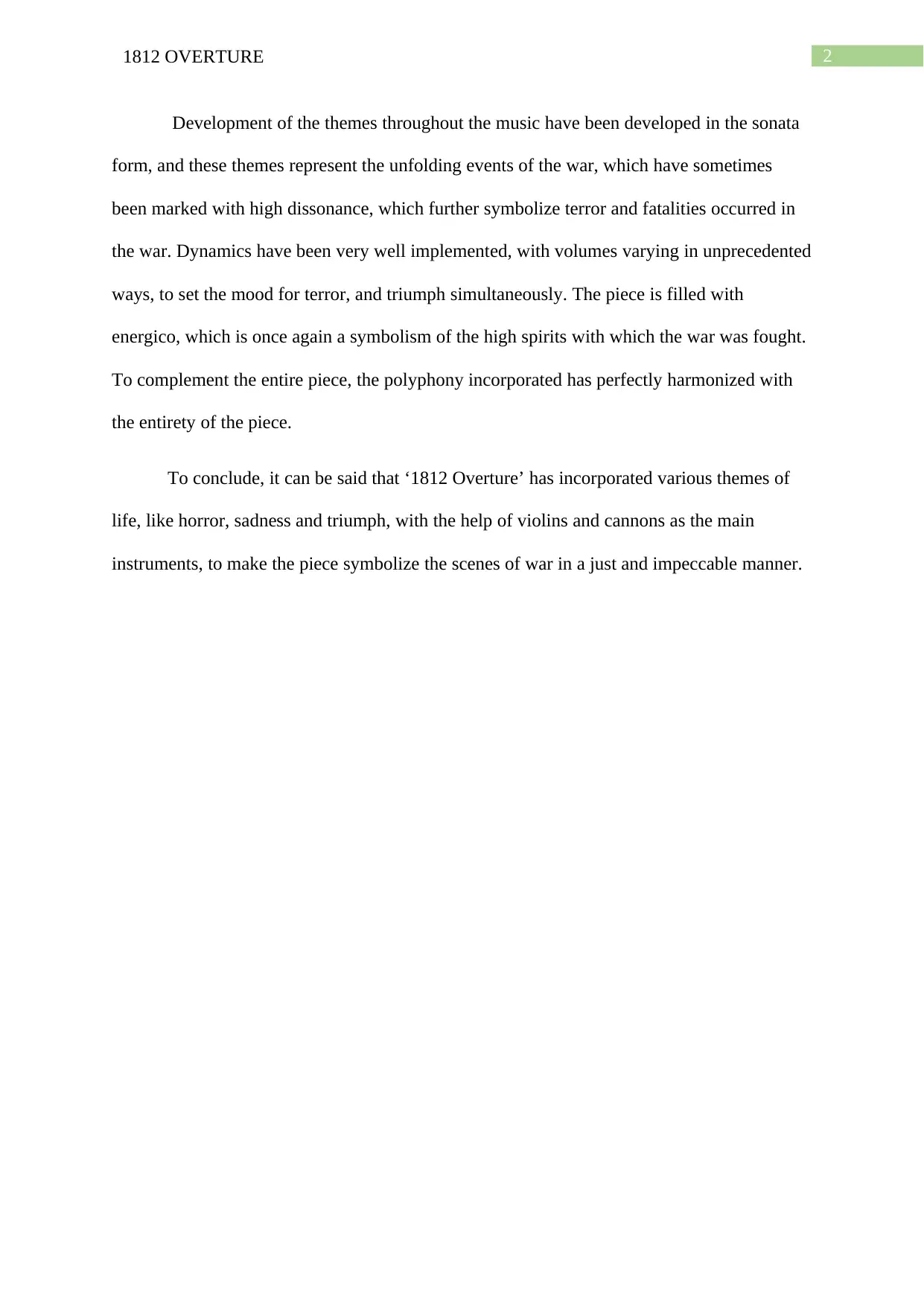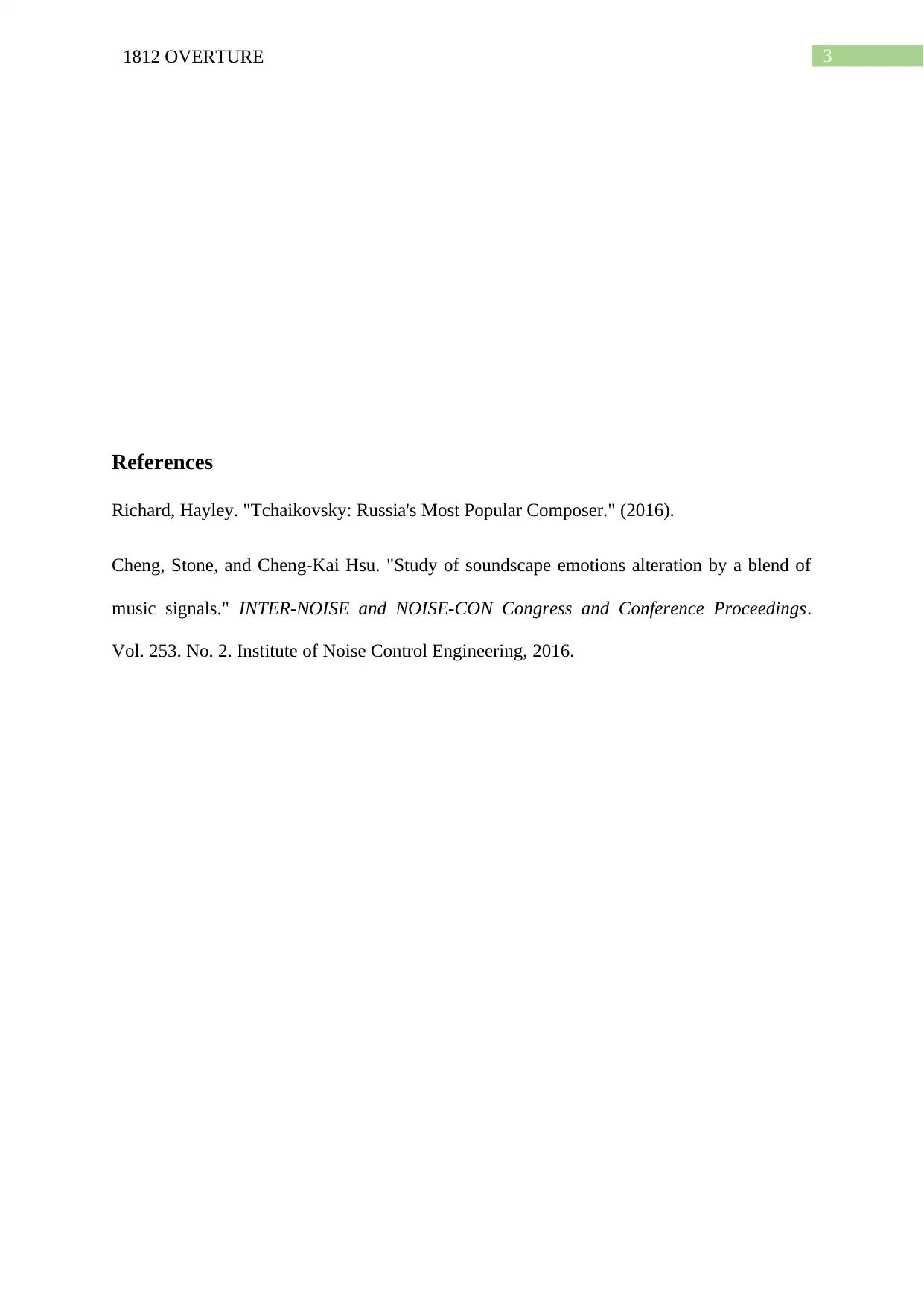The 1812 Overture: A Deep Dive into Tchaikovsky's Composition
VerifiedAdded on 2023/01/18
|4
|574
|95
Essay
AI Summary
This essay provides an analysis of Peter Tchaikovsky's '1812 Overture,' composed in 1880 to commemorate the Russian defense against Napoleon's army. The essay examines how the music, which premiered in Moscow in 1882, uses various musical elements to symbolize the events of the war. It begins with a slow, monophonic harmony representing the invasion, which transitions into a faster tempo symbolizing Russian bravery. The essay discusses the development of themes in sonata form, reflecting the unfolding events of the war, and the use of dynamics to convey terror and triumph. The inclusion of energico and polyphony complements the piece, with violins and cannons serving as primary instruments. The analysis concludes that the '1812 Overture' effectively incorporates themes of horror, sadness, and triumph to symbolize the war.
1 out of 4




![[object Object]](/_next/static/media/star-bottom.7253800d.svg)